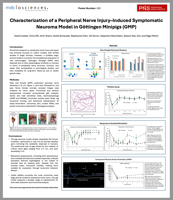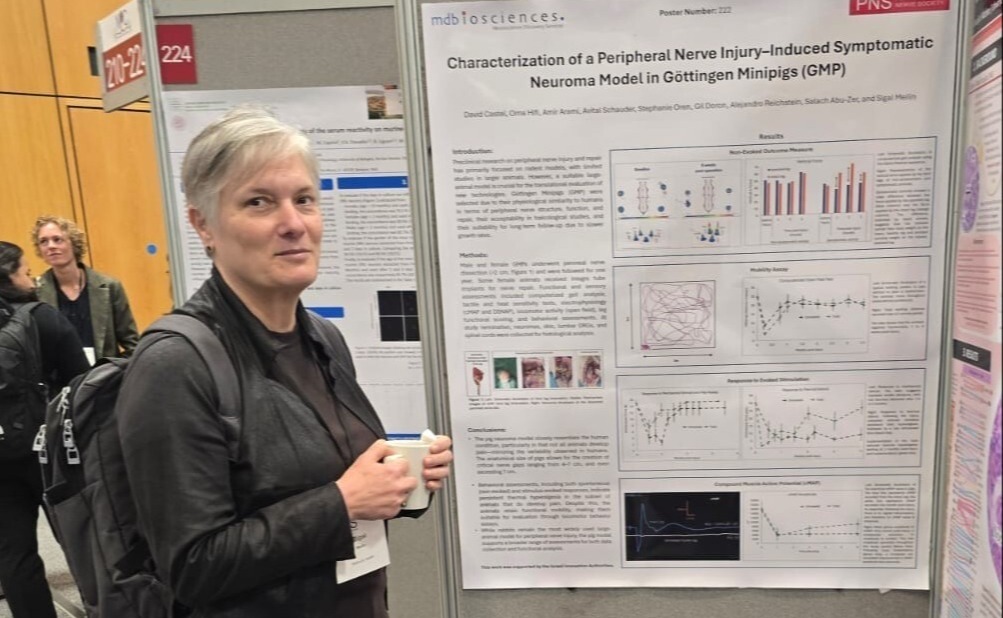MD Biosciences attended the Peripheral Nerve Society 2025 and presented on our pig peripheral nerve injury model. The poster presents the development and implementation of a peripheral nerve injury model in Göttingen Minipigs, highlighting its relevance for translational research and long-term evaluation of novel therapeutic approaches.
Full poster text:
Introduction: Preclinical research on peripheral nerve injury and repair has primarily focused on rodent models, with limited studies in larger animals. However, a suitable largeanimal model is crucial for the translational evaluation of new technologies. Göttingen Minipigs (GMP) were selected due to their physiological similarity to humans in terms of peripheral nerve structure, function, and repair, their acceptability in toxicological studies, and their suitability for long-term follow-up due to slower growth rates.
Methods: Male and female GMPs underwent peroneal nerve dissection (>2 cm; Figure 1) and were followed for one year. Some female animals received Integra tube implants for nerve repair. Functional and sensory assessments included computerized gait analysis, tactile and heat sensitivity tests, electrophysiology (cMAP and DSNAP), locomotor activity (open field), leg functional scoring, and behavioral assessments. At study termination, neuromas, skin, lumbar DRGs, and spinal cords were collected for histological analysis.
Conclusions:
• The pig neuroma model closely resembles the human condition, particularly in that not all animals develop pain—mirroring the variability observed in humans. The anatomical size of pigs allows for the creation of critical nerve gaps ranging from 4–7 cm, and even exceeding 7 cm.
• Behavioral assessments, including both spontaneous (non-evoked) and stimulus-evoked responses, indicate persistent thermal hyperalgesia in the subset of animals that do develop pain. Despite this, the animals retain functional mobility, making them suitable for evaluation through locomotor behavior assays.
• While rabbits remain the most widely used largeanimal model for peripheral nerve injury, the pig model supports a broader range of assessments for both data collection and functional analysis.
Download the full poster here.





